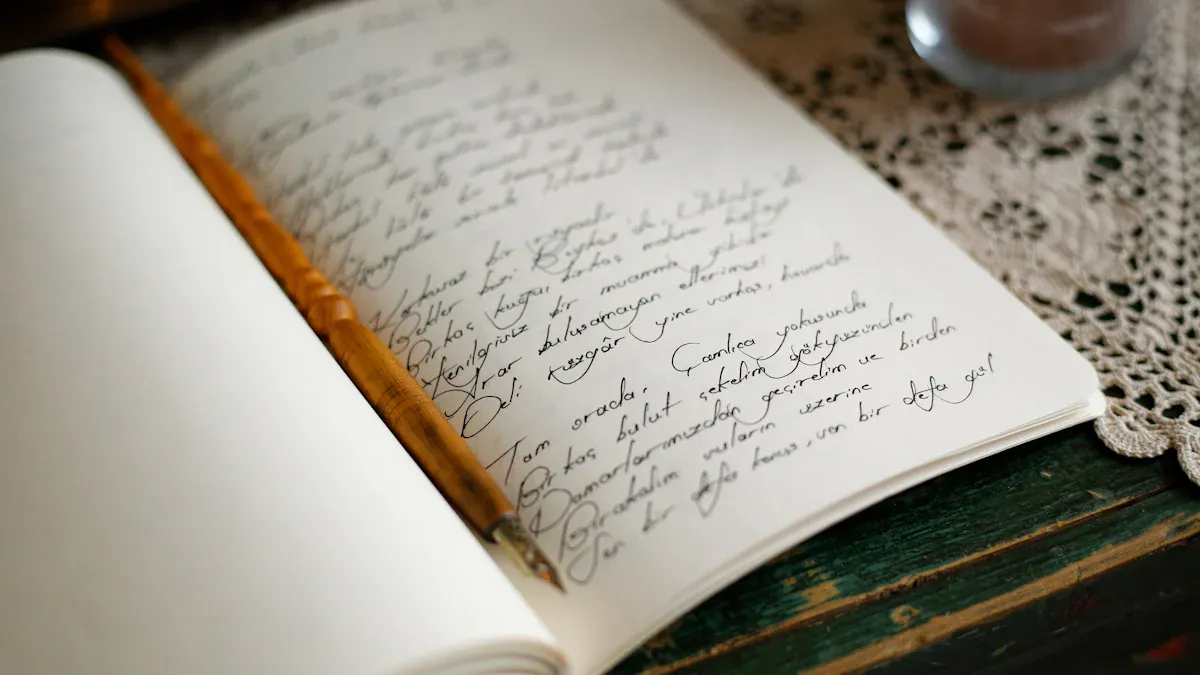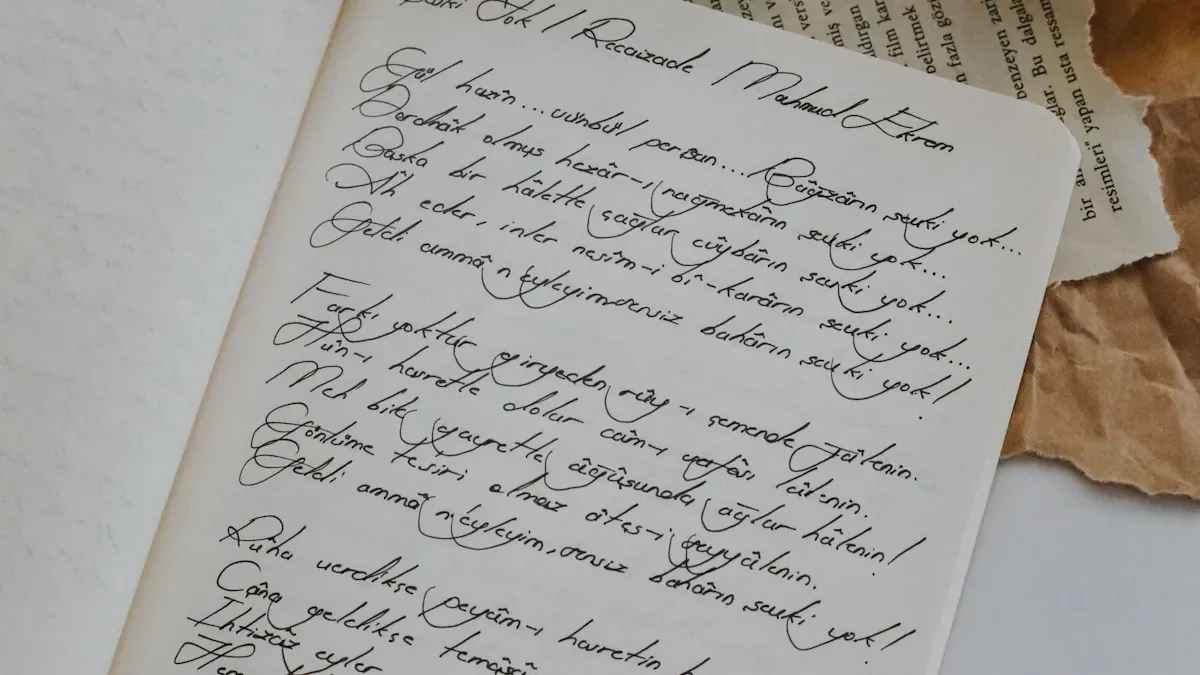
Ready to explore Wagner’s world? Here are 10 important books and resources that help you understand the Ring Cycle:
|
Book/Resource |
Author |
Focus |
|---|---|---|
|
Richard Wagner: A Biography |
Derek Watson |
Wagner’s life and work |
|
The Wagner Operas |
Ernest Newman |
Opera analysis, motifs |
|
The Wagner Compendium |
Barry Millington |
Guide to Wagner’s music |
|
Drama and the World of Richard Wagner |
Dieter Borchmeyer |
Dramatic context |
|
Pro and Contra Wagner |
Thomas Mann |
Debates on Wagner |
|
The Faber Pocket Guide to Wagner |
Michael Tanner |
Introduction to Wagner |
|
Nietzsche: A Very Short Introduction |
Michael Tanner |
Philosophy and Wagner |
|
Wagner |
Michael Tanner |
General introduction |
|
Penguin Classics Ring Libretto |
John Deathridge |
Ring text and translation |
|
Deryck Cooke CD |
Deryck Cooke |
Musical themes from the Ring |
You can begin with a simple introduction to Wagner. You can also use visual guides and recordings to learn about the Ring. If you are new, you might like Michael Tanner’s books. If you already know a lot, you may enjoy Barry Millington’s compendium. No matter your experience, these resources show why Richard Wagner’s Ring Cycle is still famous.
Key Takeaways
-
Begin with easy books like ‘Wagner Without Fear' or Michael Tanner’s guides. These books help you learn the story and music in a simple way.
-
Use English translations and side-by-side librettos. This lets you enjoy the Ring Cycle’s strong poetry and drama without knowing German.
-
Look at visual guides and pictures, like Arthur Rackham’s art. These show the characters and story, making the operas easier to understand.
-
Listen to famous recordings like the Solti Decca set. You can also watch Met Opera HD videos to enjoy the music and drama at home.
-
Use many resources—books, translations, pictures, and recordings. This helps you learn more and enjoy Wagner’s Ring Cycle at your own speed.
Understanding the Ring Cycle
Key Commentaries
When you start exploring Wagner’s Ring Cycle, you might feel a bit lost. The story is huge, and the music is deep. Good commentaries can help you find your way. Some books explain the ideas and stories behind the Ring. Others show you how Wagner built his world.
Here are some of the most valuable books and commentaries you should check out:
-
I Saw the World End by Deryck Cooke gives you a close look at Wagner’s sources. Cooke explains how Wagner used old stories like the Poetic Edda. You learn why these myths matter in the Ring Cycle.
-
Stanley R. Hauer’s work builds on Cooke’s ideas. Hauer shows you how Wagner used words and names from old Scandinavian tales. He points out the clever ways Wagner played with language.
-
Richard Wagner and the Nibelungs by Elizabeth Magee digs deep into Wagner’s research. Magee explains how Wagner borrowed from old legends and changed them to fit his own story.
-
If you want to know more about the music, Robert Bailey and Patrick McCreless offer great insights. They focus on how Wagner’s music tells the story.
Tip: If you are new to the Ring, start with Deryck Cooke’s book. It is clear and easy to follow. Magee’s book is great if you want more detail.
These commentaries appear in many academic books and articles. Scholars trust them because they explain how Richard Wagner created the Ring Cycle from old myths and stories.
Essential Analyses
You might want to dig even deeper into the Ring Cycle. Some books break down the music and ideas in a way that makes sense, even if you are not an expert.
Here are a few top picks:
-
Wagner Without Fear by William Berger
This book is perfect if you feel nervous about starting Wagner. Berger writes in a friendly way. He explains the story and music without using hard words. You get fun facts and simple guides to each opera in the cycle. -
The Perfect Wagnerite by George Bernard Shaw
Shaw’s book is a classic. He looks at the Ring from a new angle. Shaw talks about the big ideas in the story, like power and greed. He also shares his own opinions, which makes the book lively. -
The Wagner Operas by Ernest Newman
If you want to know more about the music, this book is for you. Newman explains how Wagner uses musical themes, called leitmotifs, to tell the story. He shows you how each part of the music fits into the whole cycle.
|
Book Title |
Best For |
What You’ll Learn |
|---|---|---|
|
Wagner Without Fear |
Beginners |
Story, music, fun facts |
|
The Perfect Wagnerite |
All readers |
Big ideas, opinions, lively writing |
|
The Wagner Operas |
Music lovers |
Leitmotifs, musical structure, analysis |
Note: If you are just starting, try “Wagner Without Fear” first. If you already know a bit about the Ring, “The Wagner Operas” will help you see the music in a new way.
You do not need to read every book at once. Pick the one that matches your interest. Each book helps you see the Ring Cycle in a new light. With these guides, you can enjoy Wagner’s world and understand why people love these operas.
Ring of the Nibelung Translations

If you want to really understand Wagner’s world, you need to read the words as well as hear the music. The libretto for the ring of the nibelung is more than just a script. It is a powerful poem that shapes the whole story. Reading the ring of the nibelung in English helps you see the drama and the meaning behind every scene.
Penguin Classics Edition
The Penguin Classics translation by John Deathridge stands out for many reasons. Deathridge does not just give you a word-for-word copy. He brings the ring of the nibelung to life for today’s readers. His translation feels like a performance, not just a copy of the original. You get a fresh look at the nibelung story, with notes and an introduction that explain why this poem changed opera forever.
Deathridge’s work makes the ring of the nibelung easy to follow. He uses clear language, so you do not get lost. The Penguin Classics edition also gives you background on Wagner and the culture of his time. This helps you see why the ring of the nibelung became so important in Europe. If you want a full translation that feels modern and alive, this is the one to choose.
Tip: Try reading a scene from the Penguin Classics edition before you listen to the music. You will notice new details and understand the characters better.
Parallel Text Librettos
Parallel text editions show the German and English side by side. These books are great if you want to compare the original words with the translation. You can spot how Wagner used language in the ring of the nibelung and see what changes in English. This helps you catch small details and enjoy the poetry of the nibelung story.
Here’s how you can use parallel text editions:
-
Read the German lines out loud, even if you do not speak German. You will hear the rhythm Wagner wanted.
-
Check the English side to make sure you understand the story.
-
Look for words or phrases that repeat. These often point to big ideas in the ring of the nibelung.
If you want to go deeper, try reading both the Penguin Classics edition and a parallel text libretto. You will get the best of both worlds—a modern full translation and a close look at the original nibelung language.
Richard Wagner Biographies
When you learn about Wagner’s life, his music makes more sense. Biographies tell stories about the real person, not just the legend. You find out about his family, dreams, and hard times. This helps the music feel more real and alive. Two good biographies are by Derek Watson and Michael Tanner.
Here is a quick guide to some well-known biographies and how they are different:
|
Biography Title |
Author(s) |
Approach / Focus |
Notable Features / Critiques |
|---|---|---|---|
|
Life of Wagner (4 volumes) |
Ernest Newman |
Comprehensive, detailed multi-volume biography |
Classic and balanced but considered outdated; lengthy and less accessible to general readers |
|
Wagner as Man and Artist |
Ernest Newman |
Short biography |
Earlier work, somewhat harsh on Wagner; also outdated |
|
Richard Wagner and the Jews |
Milton Brener |
Thematic focus on Wagner's anti-Semitism |
Modern biography; addresses Wagner's flaws and virtues without avoidance; rare recent comprehensive work |
|
Wagner Remembered |
Stewart Spencer |
Primary sources compilation |
Uses letters and documents; annotated for context; offers balanced, nuanced insight into Wagner's personality |
|
Selected Letters of Richard Wagner |
Stewart Spencer & Barry Millington |
Primary source collection (letters) |
Reveals Wagner's complexity and dedication; considered essential for understanding Wagner beyond biographies |
|
The Man, His Mind, and His Music |
Robert Gutman |
Biographical interpretation |
Criticized for reliability; generally not recommended |
Derek Watson Biography
Derek Watson’s book feels personal and warm. He talks about Wagner’s family and feelings. Watson tells how Wagner wrote ‘Siegfried Idyll’ for his wife and son. Later, Wagner had to sell this music. Watson says it was like selling his secrets to the world. You see Wagner’s loving side and his hard choices. This book helps you see Wagner as a real person.
Tip: If you like family stories, you will like Watson’s book.
Michael Tanner Biography
Michael Tanner’s book is short and easy to read. He explains Wagner’s ideas in simple words. You do not need to know much about opera to understand. Tanner’s book is quick to finish but still teaches a lot. If you want a simple start, this book is a good pick.
Note: Watson’s book has more details and stories. Tanner’s book is easier and good for beginners.
You do not have to read every book. Pick the one that fits your style. Both books help you see Wagner’s life in a new way.
Wagner Visual Guides
Visual guides help you see Wagner’s Ring Cycle in a new way. Looking at pictures can make the story easier to understand. You meet the characters and see where the story happens. You can also follow what is going on by looking at the art. Let’s check out two good ways to see the Ring with your eyes.
Arthur Rackham Illustrations
Arthur Rackham made famous art for Wagner’s Ring of the Nibelung. His black-ink drawings and bright watercolors show the magic in the story. When you look at his art, you see gods, giants, and heroes come alive.
Rackham’s pictures changed how people think about the Ring Cycle. Big opera companies, like Seattle Opera in 1977, used his art for their costumes and sets. Many people now imagine Wagner’s world the way Rackham drew it. If you want to see the Ring through art, his books are a great start.
Tip: Look at Rackham’s art before you watch or listen to the operas. You may notice things in the music and story that match his pictures.
Illustrated Handbooks
If you want to learn about the story and ideas in Wagner’s Ring Cycle, illustrated handbooks can help. These books use pictures, essays, and guides to make the operas simple to follow. Here are some good choices:
-
Wagner's Ring of the Nibelung, A Companion by Stuart Spencer and Barry Millington gives you the libretto, translation, and helpful essays. You get both words and pictures to help you.
-
The English National Opera guides for each opera in the cycle have story summaries, translations, and lots of pictures. These guides break down the story and show you what to notice.
With these handbooks, you can follow the story, learn about the main ideas, and see how the music and story work together. Pictures and diagrams help make things clear, especially if you are new to Wagner.
Note: Illustrated guides are great if you want to see the whole story and not get lost in small details.
Ring Cycle Recordings
Listening to or watching Wagner’s Ring Cycle can feel like stepping into another world. The right recordings help you experience the magic of this epic opera series, even if you can’t visit an opera house. Here are two top choices that music lovers and experts always recommend.
Solti Decca Recording
If you want to hear the ring at its best, start with the Solti Decca recording. Many critics call it the greatest audio recording ever made. Georg Solti leads the Vienna Philharmonic, and the singers bring every character in the ring to life. The team used new stereo technology to make the music sound clear and powerful. You’ll hear details like the famous anvils in Das Rheingold, which make the story feel real.
-
The Solti Decca set was made in a studio, so you get perfect sound.
-
The production team wanted you to imagine the stage in your mind.
-
This recording won many awards and is still a favorite for first-time listeners.
Tip: Listen with headphones to catch every detail. Try following along with a libretto or guide so you don’t miss the story.
Met Opera HD Video
Do you want to see the ring on stage? The Metropolitan Opera’s HD video brings the action right to your screen. The cameras show close-ups of the singers and the amazing sets. You feel like you’re sitting in the front row. The Met’s production uses a huge mechanical set that changes for each scene. Sometimes the set steals the show, but you still get a front-row seat to the drama and music.
-
The HD video lets you watch the ring at home, anytime.
-
You can see the singers’ faces and follow the story easily.
-
Some viewers find the set a bit distracting, but the music and singing always shine.
Note: Before you watch or listen, read a short summary of the story. Try to spot the musical themes, called leitmotifs, as they come back again and again. The ring is long, so take breaks and enjoy each part.
If you want more, check out other famous recordings by Karajan, Böhm, or the Bayreuth Festival. Each one shows a new side of the ring and helps you understand why this music is so special.
Wagner Compendiums & Reference
When you want to dive deep into the world of Wagner, you need guides that bring everything together. Some reference books give you a full picture of the Ring Cycle, from the music to the stories and even the history behind it. These guides help you connect the dots and answer your biggest questions.
The Wagner Compendium
If you want one book that covers almost everything about Wagner, you should check out The Wagner Compendium. This guide brings together facts, stories, and details about Wagner’s life and his music. You get timelines, summaries, and even lists of important performances. The Wagner Compendium is easy to use. You can look up a character, a place, or a theme and find clear answers. Many people use it when they listen to the wagner operas or read about the stories.
You will also find that scholars often turn to Daniel H. Foster’s Wagner’s Ring Cycle and the Greeks. This book looks at how Wagner’s ideas connect to Greek myths and old stories. Foster explains how the wagner operas borrow from ancient tales and why that matters. If you want to see how Wagner fits into a bigger world, this book is a great choice.
Cambridge Companion
The Cambridge Companion to Wagner’s Der Ring des Nibelungen is another must-have. This book brings together essays from different experts. Each essay looks at a new part of the Ring Cycle. You learn about the music, the drama, and even the big ideas behind the wagner operas. The Cambridge Companion helps you see the Ring from many points of view.
You might also enjoy reading M. Owen Lee’s Wagner’s Ring: Turning the Sky Around or Thomas May’s Decoding Wagner. These books help you understand how the wagner operas connect to human nature and art. They are easy to read and full of insights.
Tip: Use these guides when you want to explore the Ring Cycle in detail. They make it easy to find answers and learn new things every time you listen or read.
Source Studies & Context
Theology and Mythology
When you dive into Wagner’s Ring Cycle, you step into a world shaped by big ideas about gods, humans, and the universe. The story is not just about heroes and magic. It also explores deep questions about life, destiny, and the meaning of everything. Many people find that looking at the Ring through theology and mythology opens up new ways to understand the music and drama.
You can see how Wagner mixes old myths with new ideas. He uses stories from Norse legends, but he also brings in thoughts from philosophers like Schelling and Schopenhauer. These thinkers talked about how God and the world connect, and Wagner puts those ideas right into his operas.
Here are some ways theology shapes the Ring Cycle:
-
Wagner shows a world where God is part of everything, not just above it. You hear this in the music and see it in the story.
-
The Ring is more than a tale about power. It becomes a quest for meaning, where gods and humans work together to shape their fate.
-
Wagner’s music uses special themes, called leitmotifs, to show spiritual ideas. Each theme stands for a feeling, a person, or even a big idea like hope or doom.
-
The story blends creation, destruction, and renewal. You watch characters struggle with choices that feel bigger than life.
When you read books like “Theology of Wagner’s Ring Cycle I,” you start to see the Ring as a spiritual journey. The music and story become a way to talk about the big mysteries of life.
Story of the Century
Wagner’s Ring Cycle is not just a piece of music history. It is a story that shaped art, culture, and even how people think about myths today. If you want to see how the Ring fits into the bigger picture, you should check out resources like “Story of the Century.”
This book helps you connect the dots between the Ring and the world around it. You learn how Wagner took old legends and made them feel new. He used the Ring to talk about the hopes and fears of his own time. You see how the story reflects big changes in history, like the rise of new ideas about freedom and power.
-
“Story of the Century” gives you background on the myths Wagner used.
-
It explains how the Ring became a symbol for many artists and thinkers.
-
You find out why people still talk about the Ring Cycle today.
If you want to understand why Wagner’s Ring matters, these resources help you see the whole picture—from ancient myths to modern meaning.
You have so many great ways to explore Wagner’s Ring Cycle. Each resource brings something special—some help you follow the story, others let you hear the music or see the drama unfold. If you are just starting, try these steps:
1. Learn the four operas and their order. 2. Use translations or subtitles to follow the story. 3. Listen for leitmotifs to spot key themes. 4. Take your time and enjoy each part. 5. Watch easy videos or read guides for support. 6. Notice how music and drama work together.
Mix books, recordings, and visual guides to match your style. Some people love reading about myths, while others enjoy watching stage productions or listening to different conductors. When you combine these resources, you get a deeper, more exciting look at Wagner’s world. Dive in and let your curiosity lead the way!
FAQ
What is Wagner’s Ring Cycle?
You can think of the Ring Cycle as four long operas that tell one big story. Wagner wrote them to be performed together. The story has gods, heroes, and magic. If you like epic tales, you will enjoy this music adventure.
Do I need to know German to enjoy the Ring Cycle?
No, you do not need to know German. Many books and recordings have English translations. You can follow the story with subtitles or a libretto. This makes it easy to understand what is happening on stage.
How long does it take to watch the whole Ring Cycle?
The full Ring Cycle takes about 15 hours. Most opera houses perform it over four nights. You can watch or listen at your own pace at home. Take breaks and enjoy each part.
What is a leitmotif?
A leitmotif is a short musical theme. Wagner uses these to represent people, places, or ideas. When you hear a certain tune, you know something important is happening. Try to spot them as you listen!
Where should I start if I am new to Wagner?
Start with a guidebook like “Wagner Without Fear” or listen to highlights from the Solti recording. You can also watch short video clips online. Pick what feels fun and easy for you.





